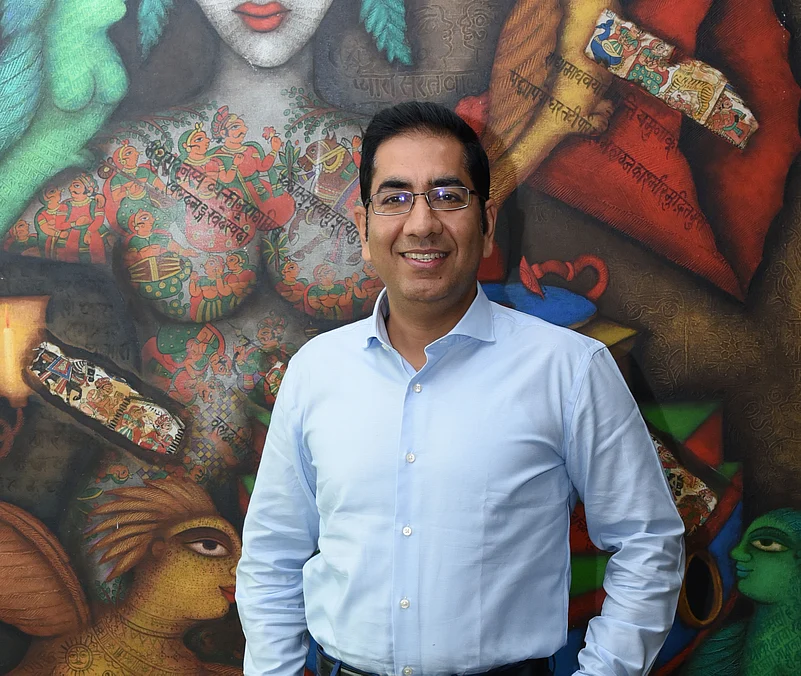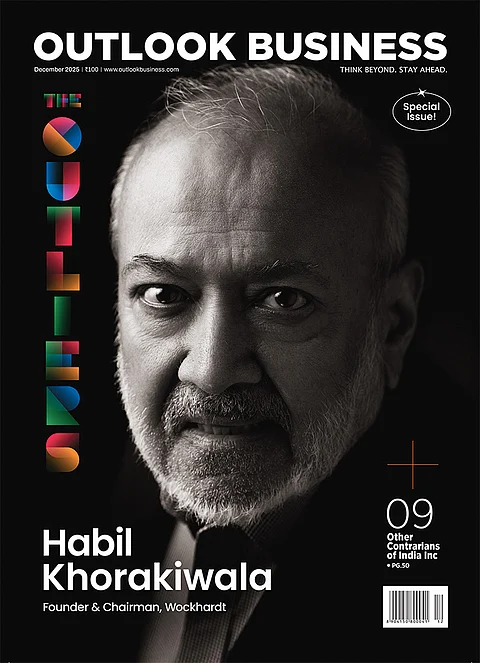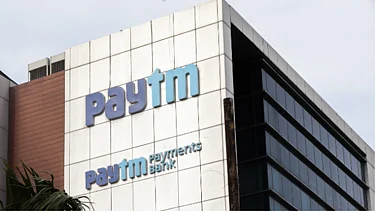Growth of Fast Moving Consumer Goods (FMCG) companies has been under the spotlight as sluggish demand in rural areas in India led to a slowdown in volume growth of many big names in the last one year. Market analytics firm Kantar said in a recent report that the sector will see subdued growth till the September quarter of financial year 2025.
While analysts predict when the broad-based demand will pick up, Dabur CEO Mohit Malhotra is confident that good growth lies ahead for his company in the coming months. Malhotra says that Dabur's growth will be driven by both urban and rural markets as the company works on improving distribution network across the country.
In an exclusive interview to Outlook Business, he talks about Dabur's growth strategies, the overall demand situation and the expansion of company's network in the country.
There have been lot of talks about volume growth in the rural market and how the consumption trend is playing out there. As Dabur has a significant presence in the hinterlands, what can you tell us about the trends you have seen in the market in the last 1 year?
While rural India had been a key driver of growth a few years back, we have seen rural demand dropping below urban demand in the previous financial year due to the high inflationary environment. The new-age channels like modern trade and e-commerce have been driving urban growth.
While the syndicated data shows that rural demand continues to lag urban demand, the gap between urban and rural and been shrinking, which shows a sequential revival in demand from the hinterland.
However, Dabur has seen demand from the hinterland return to the growth trajectory and outpace urban demand in Q3 of this fiscal. Rural growth for Dabur was 200 bps higher than urban growth in Q3 and this is a result of the several initiatives that we have rolled out to seed demand in the hinterland.
We have been investing in expanding our rural footprint, which has expanded by 17,000 villages in the current fiscal from 100,000 to 117,000. We are working towards ending this year with a rural coverage of 1.2 lakh villages. Even syndicated data shows that Dabur’s rural distribution has grown the highest among FMCG peers, giving us a distinct advantage and helped us reap the benefits of improvement in rural consumer sentiments.
Alongside, we have expanded our product basket in the rural market by way of newer affordable and rural-specific packs across categories to feed these markets and push demand growth. Similar initiatives will continue. We have also invested in consumer activations in rural India to better reach out to consumers in the hinterland, giving them an opportunity to touch, feel and experience our products.
We feel that it’s only going to improve from here, thanks to continued Capex in infrastructure building by the government.
In making sure Dabur has the edge in the markets, how are you staving off the challenge posed by local regional players and what strategies have you looking at to maximise growth?
While the rural consumer may generally be seen as less affluent than her urban counterpart, things are changing fast. Aspiration levels in rural India have also grown and they also aspire to use the same brands that they see advertised on television.
With the growing penetration of internet and smart phones, the rural consumers are as aware as their urban counterparts. Gone are the days when the rural consumer was content with using mustard oil and plain soap on her hair and skin. Today, she is seeking special products like Dabur Amla Hair Oil and the Gulabari skin care range.
We have also invested in consumer activations in rural India to better reach out to consumers in the hinterland, giving them an opportunity to touch, feel and experience our products.
At Dabur, we feel direct engagement with the consumer is the best way to reach out to the rural populace. In rural India, we have always moved beyond the traditional media options and speak to consumer through a host of special initiatives that not only engage the consumer but also give her an opportunity to touch, feel and experience the products.
Be it through participation in haats, nukkad nataks or innovative consumer activations, we have captured what is today the most expensive piece of rural real estate – the consumer mind-space.
Is Dabur also looking at increasing its strength in the urban markets and targeting the premium segment more which has seen healthy growth in the industry?
At Dabur, we are looking at both urban and rural markets to drive growth. In the urban markets, where expansion is driven by e-commerce, modern trade channels, and expansion of mini metro and class one towns, we are focusing on premiumisation with large pack sizes. We are also introducing new brands in the premium category, particularly on e-commerce platforms, that relate with the millennials and centennials.
We are also restaging our core to reach out to Young India. We are looking at three key aspects here. The first is to build stronger scientific claims for each of our products and back them up with scientific data and clinical trials. In addition, we will be increasing the relevance of our time-tested and efficacious products by introducing new-age formats, and introducing aspirational packaging for our products.
The repackaging exercise is aimed at tapping into this younger user base. The idea is to make a pack more consumer-friendly with ergonomically better designs that are easier to hold and use.
We today have 8 power brands in India. Our intent is to develop these power brands to power platforms by introducing a range of products and formats under each of these power brands, thereby extending the portfolio and expanding the total addressable market. We have already introduced Dabur Chyawanprash in tablet and powder formats, Dabur Red Paste in a modern Gel format, Dabur Honitus in ready-to-drink kaadha format, to name a few. Such innovations will continue, going forward.
To improve margins, what’s going to be the most important factor for the company in the near term?
The moderation in inflation both in India and International markets has resulted in gross margin improvement of 310 bps in the consolidated business and 213 bps in the standalone business during the third quarter of this fiscal alone.
We see continued year-on-year expansion in gross margin for a couple of quarters, although expansion will slow down as deflation comes in the base. We had also embarked on Project Samriddhi in India with an eye on cost optimization and value enhancement across various levers of the business. Under this, we explore all avenues to manage costs in the new normal scenario to transform Dabur into a more resilient company.
The gains were ploughed back into the business and invested behind our brands. We have significantly increased our media spends during the quarter. Our ad spends for the quarter marked a 36 per cent growth in the Consolidated business and 30 per cent jump in the standalone business.



























